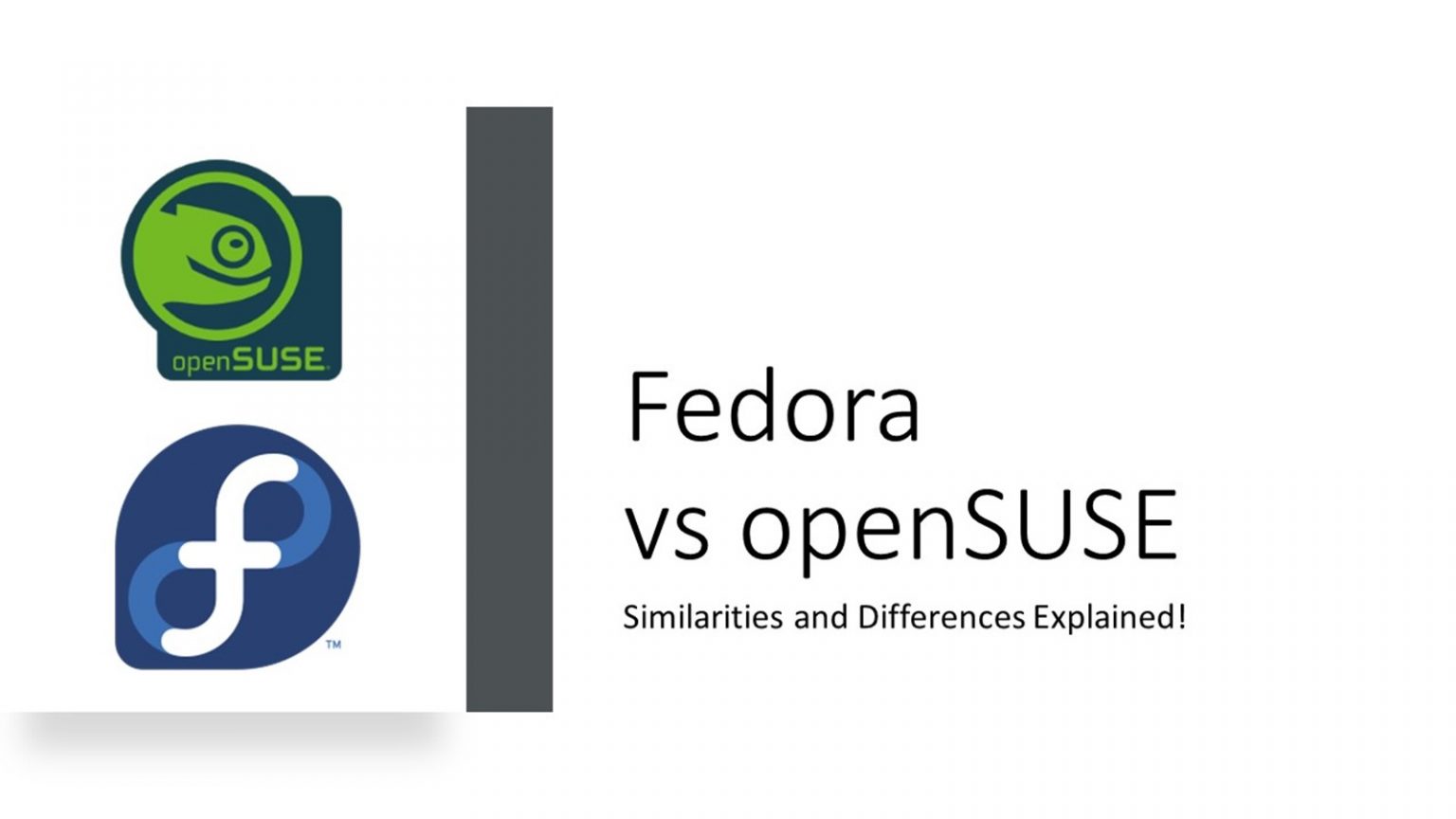Fedora Vs. Opensuse Tumbleweed: Rolling Release Face-off
Executive Summary

Fedora and OpenSUSE Tumbleweed are two of the most popular rolling release Linux distributions, but choosing one may be challenging. They offer a unique set of benefits and disadvantages so each user must do their own research. With up-to-date software, bleeding-edge features, and quick iteration cycles, rolling releases prioritize timely updates over rigorous testing, which may not suit everyone. To select the most suitable one, consider these points.

1. Release Model
-
Fedora: Follows a strict and predictable release schedule of new versions every six to eight months while maintaining support for the current and previous versions for at least 13 months, ensuring stability and long-term support.
-
OpenSUSE Tumbleweed: Rolling release model, continuous updates with the latest software from upstream projects, rolling updates, and new features as soon as they’re ready, at the cost of stability and potential issues due to frequent updates.
2. Stability and Reliability
-
Fedora: Emphasizes stability and is user-friendly, making it a solid choice for users seeking a reliable and polished experience with fewer unexpected issues or system breakage. Fedora undergoes rigorous testing for stability and passes stringent quality control tests.
-
OpenSUSE Tumbleweed: Prioritizes rapid updates and constant refinement, which involves more frequent updates and bug fixes than Fedora. While it provides access to the latest and greatest software, it may also introduce newer bugs and stability issues.
3. Software Availability
-
Fedora: Has a vast software catalog in its official repositories, including a wide range of applications such as office suites, productivity tools, and multimedia players, extensive software repositories with numerous packages covering various categories.
-
OpenSUSE Tumbleweed: Backed by a vast selection of software packages, including the latest OpenSUSE packages and an extensive selection of applications from third-party repositories.
4. Package Management and Upgradability
-
Fedora: Employs DNF (Dandified Yum) as its package manager, a powerful tool that offers a user-friendly interface, robust dependency resolution, and extended capabilities for managing software packages and updates. DNF is known for its stability, ease of use, and package dependency tracking.
-
OpenSUSE Tumbleweed: Utilizes Zypper as its package manager, offering a stable and reliable way to manage packages, well-suited for advanced users and system administrators due to its flexible command-line interface and robust package management capabilities.
5. Advantage and Disadvantage
- Fedora:
Advantages:
- Stability and reliability.
- A wide range of software in the default repositories.
- Regular updates and security patches.
- Long-term support for each release.
–Disadvantage: Upgrades between different versions can sometimes be problematic.
- OpenSUSE Tumbleweed:
Advantages:
- Always uses the latest software packages.
- Contains multiple up-to-date desktops.
- Backed by a friendly and active community.
Disadvantage:
- Less stable than Fedora.
- Can sometimes break after an update.
- Less suitable for beginners relative to certain user-friendliness facets.
Conclusion
Selecting the best option depends on individual requirements, expertise, and preferences. For users seeking stability over the latest software, Fedora stands out. If cutting-edge software and the willingness to embrace potential instability appeal, OpenSUSE Tumbleweed may be the right choice. Ultimately, the choice depends on your specific needs and priorities.
Keyword Phrase Tags
- Linux Rolling Release Distros
- Fedora Vs. OpenSUSE
- Rolling Release Linux Distro
- Stable Linux Distribution
- Tumbleweed Linux

Awesome article! Thanks for sharing. I’m a big fan of both Fedora and openSUSE, and I’ve found that they both have their own strengths and weaknesses. Fedora is great for stability, while openSUSE is great for software availability. Ultimately, the best choice for you will depend on your individual needs.
I’m not sure I agree with the article’s conclusion. I’ve found that Fedora is actually more stable than openSUSE. I’ve had several problems with openSUSE Tumbleweed, but I’ve never had any problems with Fedora.
The article mentions that Fedora has a long support cycle. Can you explain what that means?
I’m not convinced that openSUSE Tumbleweed is really a rolling release. I’ve found that the updates are often delayed, and I’ve had to wait weeks for important security patches.
I find it ironic that the article claims that Fedora is more stable than openSUSE. I’ve found the exact opposite to be true.
The article is full of contradictions. On one hand, it says that Fedora is more stable than openSUSE. On the other hand, it says that openSUSE has a wider range of software available. Which one is it?
I’m not sure I understand the point of this article. It just seems to be a list of the differences between Fedora and openSUSE. What’s the conclusion?
I’m a big fan of openSUSE Tumbleweed. I’ve been using it for several years now, and I’ve never had any problems with it. I would highly recommend it to anyone looking for a rolling release distribution.
I’ve tried both Fedora and openSUSE, and I have to say that I prefer Fedora. I find it to be more stable and reliable. I’ve had several problems with openSUSE Tumbleweed, but I’ve never had any problems with Fedora.
The article mentions that Fedora is a good choice for users seeking a stable and reliable system. I agree with this assessment. I’ve been using Fedora for several years now, and I’ve never had any problems with it.
I’m not sure I agree with the article’s claim that openSUSE Tumbleweed is a good choice for users seeking a stable and reliable system. I’ve found the opposite to be true. I’ve had several problems with openSUSE Tumbleweed, but I’ve never had any problems with Fedora.
I’m interested in trying openSUSE Tumbleweed. Does anyone know if it’s compatible with my hardware?
I’ve been using Fedora for several years now, and I’ve never had any problems with it. I would highly recommend it to anyone looking for a stable and reliable Linux distribution.
I’m not sure I understand the point of this article. It just seems to be a list of the differences between Fedora and openSUSE. What’s the conclusion?
I’ve tried both Fedora and openSUSE, and I have to say that I prefer Fedora. I find it to be more user-friendly and easier to use. I’ve had several problems with openSUSE Tumbleweed, but I’ve never had any problems with Fedora.